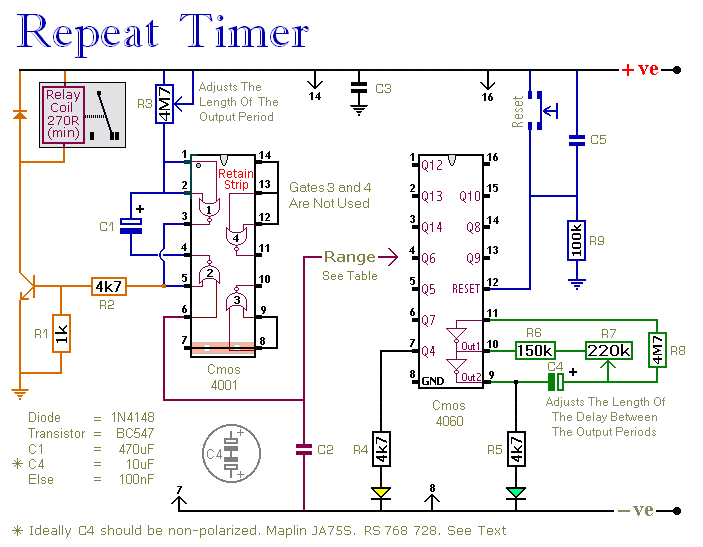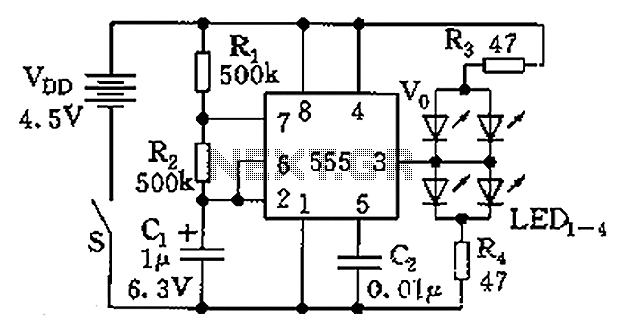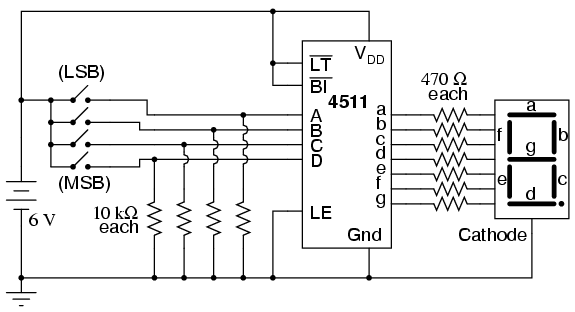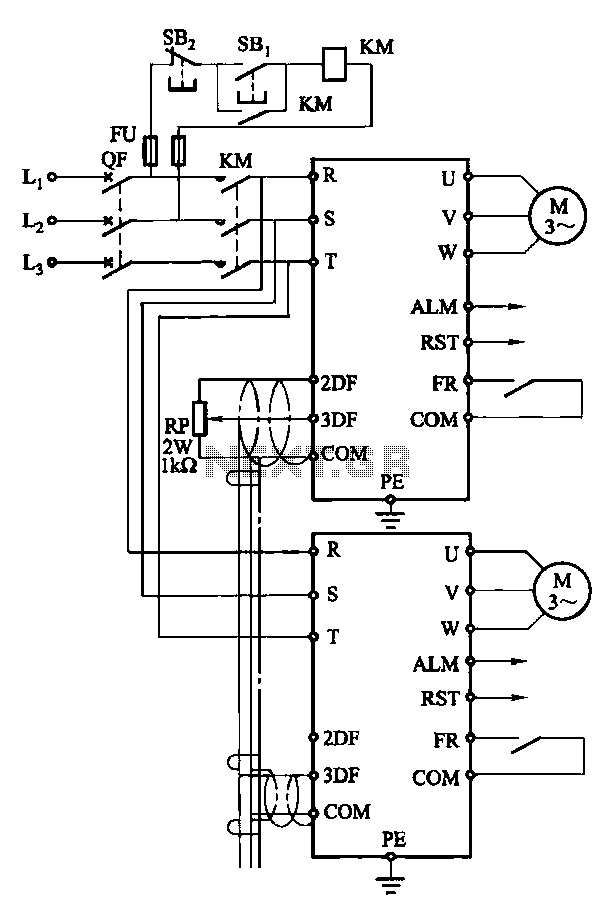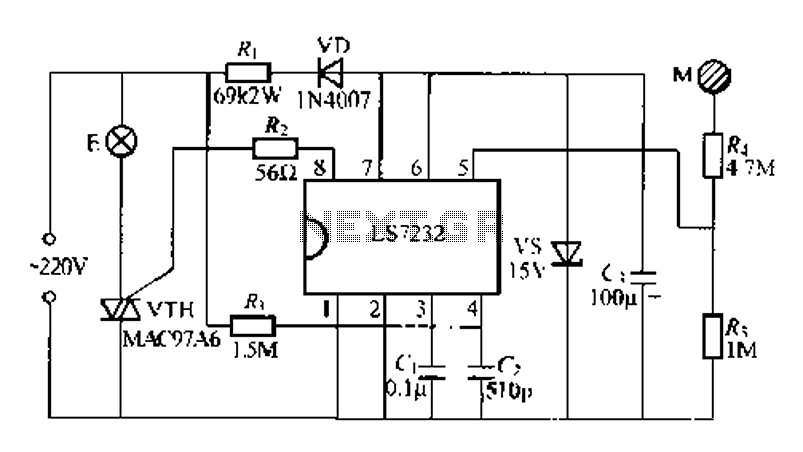
A star-delta switch automatically a start-up circuit
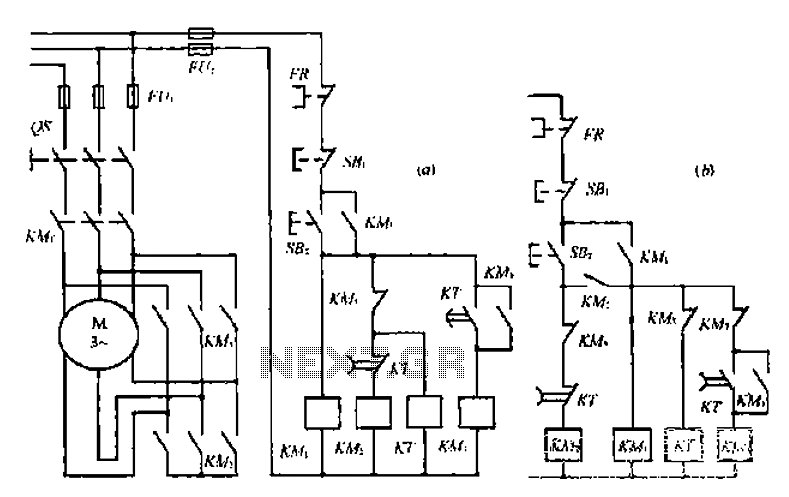
A star-delta switch is utilized for starting circuits, commonly depicted in Figure I-5 (a) of the knife wiring. While this method is effective, it poses security risks. When the motor starts, it can create significant voltage fluctuations that may affect other devices on the same electrical line. The increased starting current can lead to frequent fuse blowouts and may reduce the lifespan of the equipment. The wiring diagram in Figure I-5 (a) illustrates the sequential control of KM1 and KM2, ensuring a safe and reliable operation. If KM2 experiences a fault, it will prevent the entire circuit from functioning, thereby protecting the motor from excessive current during startup. Additionally, this method minimizes the impact on other electrical appliances connected to the same line.
The star-delta starting method is a widely adopted technique for reducing the inrush current during the startup of three-phase induction motors. In this configuration, the motor is initially connected in a star (Y) configuration, which limits the voltage applied to each winding to 1/√3 of the line voltage. After a predetermined time, the motor is switched to a delta (Δ) configuration, allowing it to operate at full voltage and power.
The schematic for a star-delta starter typically includes contactors KM1 and KM2, which control the switching between the star and delta configurations. The control circuit may also include overload relays and timers to ensure proper operation and protection. The overload relay monitors the motor current and disconnects the circuit if it exceeds a predetermined threshold, preventing damage to the motor.
The sequential operation of the contactors is critical. When the start button is pressed, KM1 is energized, connecting the motor windings in the star configuration. After a specified time delay, which can be adjusted based on the motor characteristics and application requirements, KM1 is de-energized, and KM2 is energized, switching the motor to the delta configuration. This transition must be carefully timed to avoid any overlap that could cause short circuits or damage to the contactors.
In addition to the core components, auxiliary contacts may be included in the design to provide feedback to the control circuit, indicating whether the motor is in the star or delta configuration. This feedback can be used to implement additional safety features, such as interlocks that prevent the motor from being started in the delta configuration if it is not running smoothly.
Overall, the star-delta starter circuit is an essential design for applications requiring reduced starting current, improved motor protection, and enhanced operational reliability. Proper design and implementation of this circuit contribute to the longevity and efficiency of three-phase induction motors in industrial settings.A star-delta Bolt switching a starting circuit. Often used in Figure I-5 (a) of the knife; wiring. Therapy, but there are security risks in this method, that is, when KM; Jie b ranch sleepy species pecking read J1: when the road, the motor will become barrier shoulder press movement. Thus ln1 just on the grid (spoon impact .i; I play now instantaneous voltage tll large fluctuations affect other same line of electrical work two full-Hill J heir, the starting current increases fuse blows frequently.
increased shoulder movement times the number. What the machine so that l release NPC life is reduced. the method is herein referred carp wing of an army. indiscriminately I 5 (a) of pickled wiring diagram l to a 5 l D) wiring playing method. ir] - on KM2 and KMi were sequential control, so that the boat} felt a safe and reliable way. If K M2 [some kind of D; c shut small suction flute, the entire circuit is not working to protect the motor from the start of the Qiang full of pus. Protection also Suo Ran circles often stop by a small impact, it does not affect the use of electrical appliances on the same line as T- lIi often.
The star-delta starting method is a widely adopted technique for reducing the inrush current during the startup of three-phase induction motors. In this configuration, the motor is initially connected in a star (Y) configuration, which limits the voltage applied to each winding to 1/√3 of the line voltage. After a predetermined time, the motor is switched to a delta (Δ) configuration, allowing it to operate at full voltage and power.
The schematic for a star-delta starter typically includes contactors KM1 and KM2, which control the switching between the star and delta configurations. The control circuit may also include overload relays and timers to ensure proper operation and protection. The overload relay monitors the motor current and disconnects the circuit if it exceeds a predetermined threshold, preventing damage to the motor.
The sequential operation of the contactors is critical. When the start button is pressed, KM1 is energized, connecting the motor windings in the star configuration. After a specified time delay, which can be adjusted based on the motor characteristics and application requirements, KM1 is de-energized, and KM2 is energized, switching the motor to the delta configuration. This transition must be carefully timed to avoid any overlap that could cause short circuits or damage to the contactors.
In addition to the core components, auxiliary contacts may be included in the design to provide feedback to the control circuit, indicating whether the motor is in the star or delta configuration. This feedback can be used to implement additional safety features, such as interlocks that prevent the motor from being started in the delta configuration if it is not running smoothly.
Overall, the star-delta starter circuit is an essential design for applications requiring reduced starting current, improved motor protection, and enhanced operational reliability. Proper design and implementation of this circuit contribute to the longevity and efficiency of three-phase induction motors in industrial settings.A star-delta Bolt switching a starting circuit. Often used in Figure I-5 (a) of the knife; wiring. Therapy, but there are security risks in this method, that is, when KM; Jie b ranch sleepy species pecking read J1: when the road, the motor will become barrier shoulder press movement. Thus ln1 just on the grid (spoon impact .i; I play now instantaneous voltage tll large fluctuations affect other same line of electrical work two full-Hill J heir, the starting current increases fuse blows frequently.
increased shoulder movement times the number. What the machine so that l release NPC life is reduced. the method is herein referred carp wing of an army. indiscriminately I 5 (a) of pickled wiring diagram l to a 5 l D) wiring playing method. ir] - on KM2 and KMi were sequential control, so that the boat} felt a safe and reliable way. If K M2 [some kind of D; c shut small suction flute, the entire circuit is not working to protect the motor from the start of the Qiang full of pus. Protection also Suo Ran circles often stop by a small impact, it does not affect the use of electrical appliances on the same line as T- lIi often.

